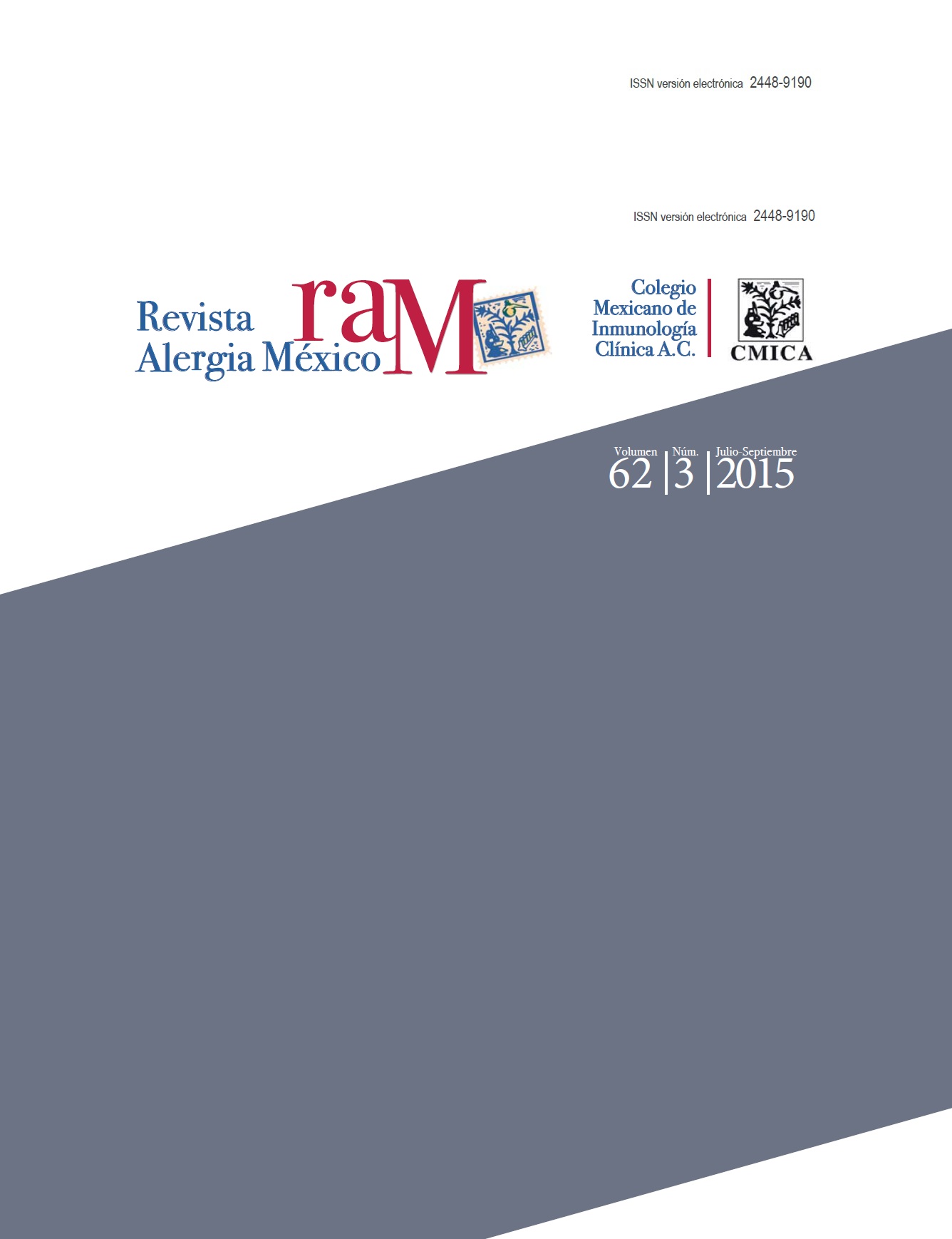Abstract
Background: Allergic patients are routinely tested for various allergens including molds, food, pollen, cockroaches and house dust mites; however, there are patients who present allergy symptoms but show negative results in Prick tests with the available allergens.
Objectives: To determine the percentage of patients sensitized to the nocturnal Lepidoptera and its role as an important environmental allergen.
Material and method: A retrospective analysis was carried out in which we determined the percentage of patients allergic to nocturnal Lepidoptera, house dust mites (Blomia tropicalis, Dermatophagoides pteronyssinus, Dermatophagoides farinae and Tyrophagus putrescentiae) and insects (Periplaneta americana and Musca domestica). Also, we analyzed the demographics and symptoms of the patients.
Results: 63% of the patients were allergic to house dust mites, 39% to nocturnal Lepidoptera, 28% to Periplaneta americana and 24% to Musca domestica. Also, 2% of the patients allergic to only one allergen were mono-sensitized to nocturnal Lepidoptera.
Conclusions: We strongly recommend that allergists constantly test for nocturnal Lepidoptera, because most of the studied patients had allergy to these insects. Key words: allergy, nocturnal Lepidoptera, moth, Prick test.
References
Peden D, Reed CH. Environmental and occupational allergies. J Allergy Clin Immunol 2010;125:S150-60. doi:10.1016/j.jaci.2009.10.073.
Panzani RC, Ariano R. Arthropods and invertebrates allergy (with the exclusion of mites): the concept of panallergy. Allergy 2001;56:1-22.
Esch R, Hartsell C, Crenshaw R, et al. Common allergenic pollens, fungi, animals, and arthropods. Clin Rev Allergy Immunol 2001;21:261-292.
Mindykowski B, Jaenicke E, Tenzer S, et al. Cockroach allergens Per a 3 are oligomers. Dev Comp Immunol 2010;34:722-733. doi:10.1016/j.dci.2010.01.011.
Focke M, Hemmer W, Wohrl S, et al. Specific sensitization to the common housefly (Musca domestica) not related to insect panallergy. Allergy 2003;58:448-451.
Mäkinen-Kiljunen S, Mussalo-Rauhamaa H, Petman L, et al. A baker’s occupational allergy to flour moth (Ephestia Kuehniella). Allergy 2001;56:696-700.
Jamieson F, Keystone J, From L, et al. Moth-associated dermatitis in Canadian travellers returning from Mexico. CMAJ 1991;145:1119-1121.
Kino T, Oshima S. Allergy to insects in Japan: I. The reaginic sensitivity to moth an butterfly in patients with bronchial asthma. J. Allergy Clin Immnunol 1978;61:10-16.
Bemanian MH, Alizadeh N, Shirkhoda S, et al. Assessment of sensitization to insect aeroallergens among patients with allergic rhinitis in Yazd City, Iran. Iran J Allergy Asthma Immunol 2012;11:253-258.
Santiago H, Bennuru S, Boyd A, et al. Structural and immunologic cross-reactivity among filarial and mite tropomyosin: Implications for the hygiene hypothesis. J Allergy Clin Immunol 2001;127:479-486. doi:10.1016/j. jaci.2010.11.007.
Asero R, Mistrello G, Roncarolo D, et al. Respiratory and Skin Allergy to Galleria mellonella (Bee Moth). Int Arch Allergy Immunol 2008;145:340-342. doi:10.1159/000110892.
Pomés A, Villalba M. Alergenos. En: Pelaez-Hernández A, Ávila-González I. Tratado de Alergología. Ergon Ediciones, 2007;3-26.

This work is licensed under a Creative Commons Attribution-NonCommercial 4.0 International License.
Copyright (c) 2015 Revista Alergia México

